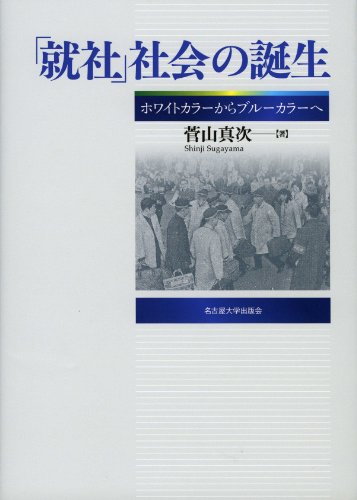1 0 0 0 OA 1920年代の企業内養成工制度 : 日立製作所の事例分析
- 著者
- 菅山 真次
- 出版者
- 土地制度史学会(現 政治経済学・経済史学会)
- 雑誌
- 土地制度史学 (ISSN:04933567)
- 巻号頁・発行日
- vol.27, no.4, pp.34-50, 1985-07-20 (Released:2017-11-30)
With regard to the corporation apprenticeship in the 1920's, there exist two opposing views at present: According to one view its role is highly estimated in relation to the formation of "the prototype" of "the Japanese Employment System"; in the other, on the contrary, its retrocession at this period is stressed. The purpose of this paper is to give meaningful material to solve this problem by making clear the change from the period of WWI to the 1920's in Totei-Yoseijo, the corporation apprenticeship school, of the Hitachi Company. In the period of WWI, Yoseijo was faced by a critical situation, which was expressed in outstandingly high rates of turnover and of absence under tightening of the labor market and development of the labor movement. Removal of the influence of the labor unions in 1919-20 and the following panic of 1920, however, changed the situation drastically: the both rates sharply declined. Since these occasions, about 40% of Yoseijo graduates, presumably much more after the late 1920's, have been involved in "the Life Long Employment System". The change didn't stop here. Around the year of 1920, the workers of the Hitachi Co. were thought to be a kind of "stragglers" or "bankrupts." But such a low social status of the workers did change dramatically in the late 1920's, when Hitachi district developed as a company town through the growth of the Hitachi Co. in spite of the depression at that time. This brought a remarkable increase in the number of applicants for Yoseijo, and the competitive rate increassed nearly 10 times as much in 1930. Thus, Yoseijo could employ as apprentices those who had earned good grades at school. This, on the one hand, contributed to further decline of the rates of turnover and absence, and, on the other, made it possible to meet the need of skill based on scientific knowledge at this period.
1 0 0 0 OA 産業革命期の企業職員層 -官営製鉄所職員のキャリア分析-
- 著者
- 菅山 真次
- 出版者
- 経営史学会
- 雑誌
- 経営史学 (ISSN:03869113)
- 巻号頁・発行日
- vol.27, no.4, pp.1-31,i, 1993-01-30 (Released:2010-11-18)
- 被引用文献数
- 1 1
The purpose of this papar is to investigate the careers of 158 white-collar workers employed by Yawata Steel in 1900, and to shed light on some aspects of the making of business white-collar employees particular to Japanese industrialization. As far as the white-collar employees studied here are concerned, one can hardly find any who had worked their way up from the ranks of artisans or skilled workers, or who had previously been employed in the traditional sector of commerce. For the most part, the careers of these personnel were limited to white-collar jobs in a broad sense, including various occupations such as business staff employees, government officials, teachers, policemen, and soldiers. A most striking fact is that a significant number of these people had experience in several different kinds of white-collar employment. This indicates that the demarcations between categories of white-collar employment were vague in early stages of Japanese industrialization. In other word, business staff personnal did not yet exist as an independent occupational group but rather fell within the broadly-defind category of white-collar workers. Based on the statistics regarding birthdate and social status, it appears that white-collar jobs were held almost exclusively by persons of samurai heritage at the beginning of the Meiji era, but that such post were becoming increasingly open to persons from all social backgrounds by 1880's. What made these changes in the make-up of white-collar workers possible was the spread of a wide variety of educational opportunities-except for regular secondary and higher schools-open to persons regardless of social status. These ranged from unsystematic education such as individual tutoring, shijuku, short training courses and correspondence schools, to the “irregular” miscellaneous schools called kakushu-gakko, and appecars to have played a critical role in satisfying a considerable demand for white-collar workers, especially in middle and lower levels that did arise in the course of Japanese industrialization.
1 0 0 0 「就社」社会の誕生 : ホワイトカラーからブルーカラーへ
1 0 0 0 <就社>社会の成立
- 著者
- 菅山 真次
- 出版者
- 学術雑誌目次速報データベース由来
- 雑誌
- 日本労働研究雑誌 (ISSN:09163808)
- 巻号頁・発行日
- vol.40, no.7, pp.2-16,99, 1998
